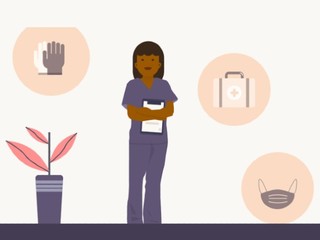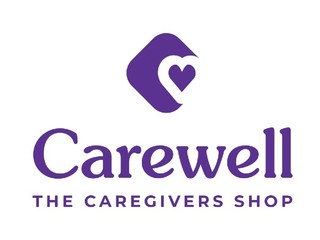Watershed Health raises $13.6M to tackle uncoordiated care
The company allows healthcare providers to sync up care using real-time patient information
Read more...
In 2019, 16.5 percent of the American population was 65 years old; by 2050 that number is expected to reach 22 percent. That means more people are going to need care in the home, yet there's currently a lack of communication and coordination between those caregivers and health systems.
That is what Ashish Shah witnesses when his father passed away, and it's what led him to found Dina, an AI-powered care-at-home platform and network that announced a $7 million Series A funding round.
"My dad was being seen by in-home caregivers, and was in and out of senior centers in the community. There's such a unique care continuum in home and community care, but I don’t think it’s really well understood by health systems or health plan. When we spent time with these caregivers, they had deep, meaningful insights around my father and his decline, and saw it coming, but yet they didn't have a mechanism to share it," Shah told me.
"As I spent time with my co-founder really thinking about the problem space, we found that my experience wasn't unique. There are 10,000 people turning 65 years old a day, we saw a massive opportunity to really create a better experience for those folks."
Founded in 2015, the Chicago-based Dina, which changed its name from Prepared Health early last year, is built on a concept that Shah calls “care traffic control.” The company works with hospitals and health plans to help deliver coordinated care as they go from being cared for in a hospital to being cared for at home.
The Dina platform helps detect early warning signals and improves the monitoring experience for the plan or the hospital. It can also identify who actually needs what and how that can potentially be fulfilled at home; the company has a network of caregivers that it can help that organization tap into, which Dina helps staff and coordinate.
In between visits, Dina has technology that allows the organization check in with the individual and see how they're progressing in whatever condition or disease state they have.
"Think of this as really mission control for hospitals and health plans. Just the way that they would monitor patients on ICU floors and in beds, really sophisticated instrumentation, and then people that can come in and out of that room; that concept now has to shift to those organizations monitoring neighborhoods, homes and the peoples within them, and doing so in a way where you detect abnormal or early warning signals and then being able to coordinate virtual or dispatch care to those people," Shah explained.
"If you were at a hospital, you can have all that coordinated on a floor in a room. When it’s brought to you, the logistics of that are a little bit more complicated and everyone needs to be on the same page. Our platform really does an excellent job with that."
For example, if there's a patient who requires hospitalization, traditionally that person would have a short term stay in a skilled nursing facility or a long-term care facility, something that can't happen now because of COVID restrictions. What the Dina platform would be able to do is identify several related home based services, send a request out to those organizations, see if they have the availability and insurance coverage activated, and then the interconnect all of them.
Another use case that the company saw over the last year were patients who were COVID positive but didn't require hospitalization. To help care for those people, Dina activated a smart chatbot experience for the patient that would check in on their disposition, how they're doing, and based on their feedback in real-time either connect them to a live video visit or route them to a live nurse to have an intervention phone call or just deliver them self care instructions until the next check in.
Thanks to COVID, Dina saw its revenue grow by 250 in 2020; it also expanded its home care network to 25 states and facilitated over 3.1 million digital dialogues to help providers manage symptoms and recovery. Dina now has 15 hospitals under contract, spanning about 1,000 sites on the hospital and home-based care side.
The platform serves as a benefit to both the patient and the healthcare facility, Shah explained. For the patient, it reduces unnecessary trips to the ER, and creates more efficiency around how to care for people. That, in turn, saves money and resources on the hospital side.
"When you're able to optimize the length of stay and get people into the appropriate care setting faster, you're able to move the needle on something called avoidable days, where it can cost the hospital anywhere from $500 to $2,000 per patient per day, while they're waiting to be discharged that next level of care. We make that happen faster," he told me.
"Also, in some cases, that health system has made investments into their own assets outside of the hospital and so we'll help actually tap into those. Oftentimes they’re underutilized so we're able to drive smart, new revenue capture, that's another reason to drive it. And if they're taking any sort of risk, an ACO model or other value based care model, we're eliminating unnecessary medical expense while keeping the outcomes really high."
For example, one of Dina's customers, Philadelphia-based Jefferson Health, generated a 7 to 8X financial return on investment in nine months.
Dina's new funding round was led by Osage Venture Partners, along with existing investors, strategic partners, and First Trust Capital Partners, bringing the company's total funding raised to over $12 million. The plan is to use its new funding to double its headcount over the next year, growing from 25 to 50 employees, specifically in sales, marketing and product. It will also be used to accelerate Dina’s development of new digital care pathways.
"The market is really pulling us, and they're asking us to move fast on things like COPD, chronic pulmonary disease, or congestive heart failure, sepsis, things that have been proven with data that can safely be managed efficiently at home. These are pathways that we’ll be really focused on," said Shah.
In addition, the company is also starting to have some conversations with the market around supporting COVID vaccination efforts as well.
The shift to virtual and home-based care was already beginning to take place; the last 12 months or so have accelerated that, to the benefit of companies like Dina, who can help facilitate that care.
"We see healthcare shifting rapidly from a facility-first mindset to a home and virtual mindset. We're gonna see, we've already seen it, reimbursement changing policy movement in that area. And now, with companies like ours, we're putting the infrastructure in place to allow every health system to not just monitor the beds in their building but to monitor and manage and dispatch care to people wherever they are. There's no question in my mind that this will be pervasive in the coming years and that's what I think has our entire company excited is the opportunity to be a really key player in all of that," said Shah.
"Our long term vision for Dina is to really be that digital nursing assistant tied to every single person out there, helping create and activate the most convenient experience on their terms, whether that's healthcare being brought to you, or it's interacting with the new virtual or tele models that are emerging."
The company allows healthcare providers to sync up care using real-time patient information
Read more...ACCC will use Flatiron Clinical Pipe to improve efficiency of clinical studies and research
Read more...The company uses its algorithm to make sure that 100% of charts are 100% accurate
Read more...
